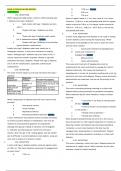Samenvatting
Violence and Security, Paradigms and Debates, midterm summary 2023
- Instelling
- Universiteit Van Amsterdam (UvA)
Hello. This is a summary of the lectures and readings for the course Violence and Security, Paradigms and Debates for the midterm. Bachelor's of Political Science at University of Amsterdam
[Meer zien]













